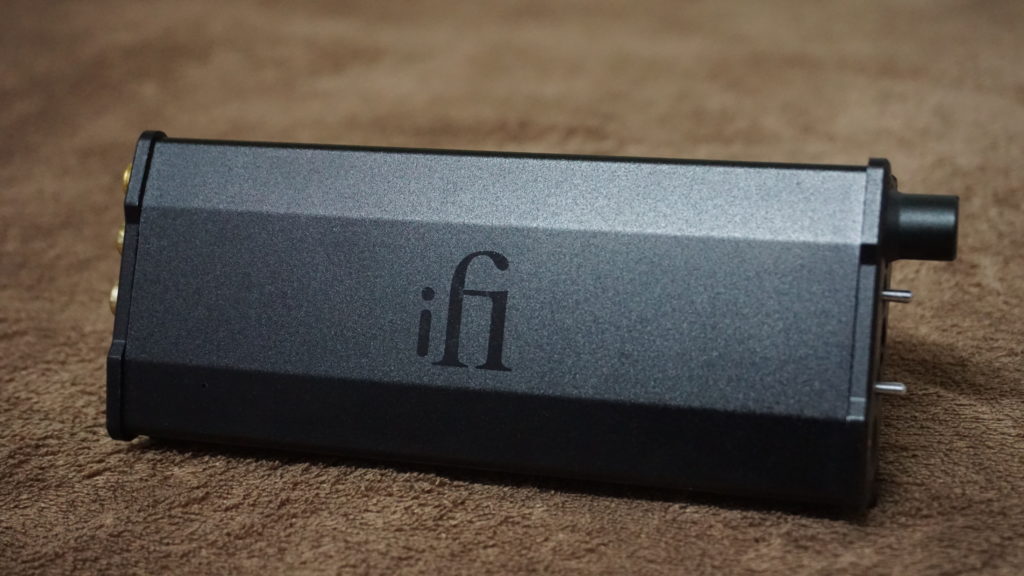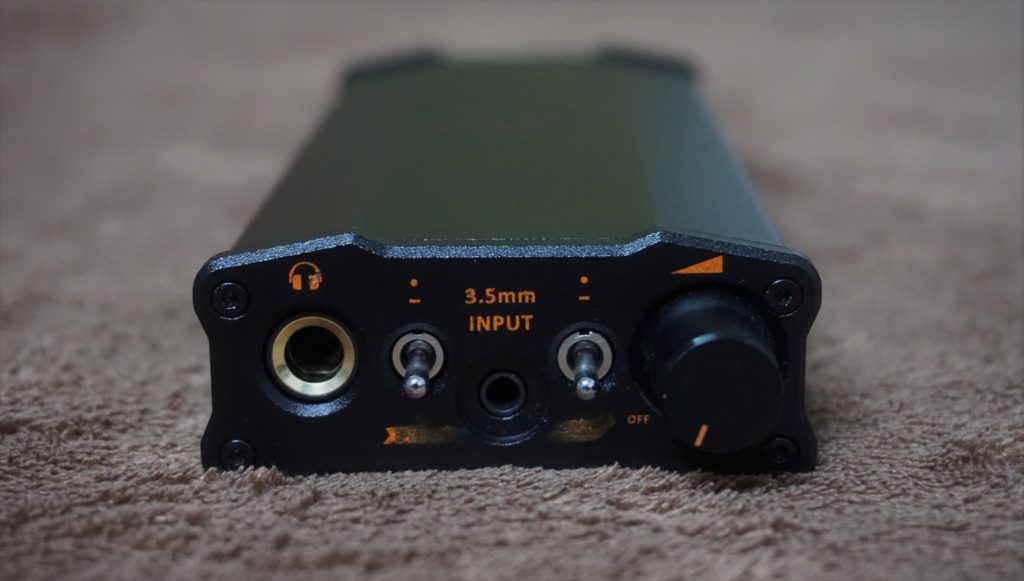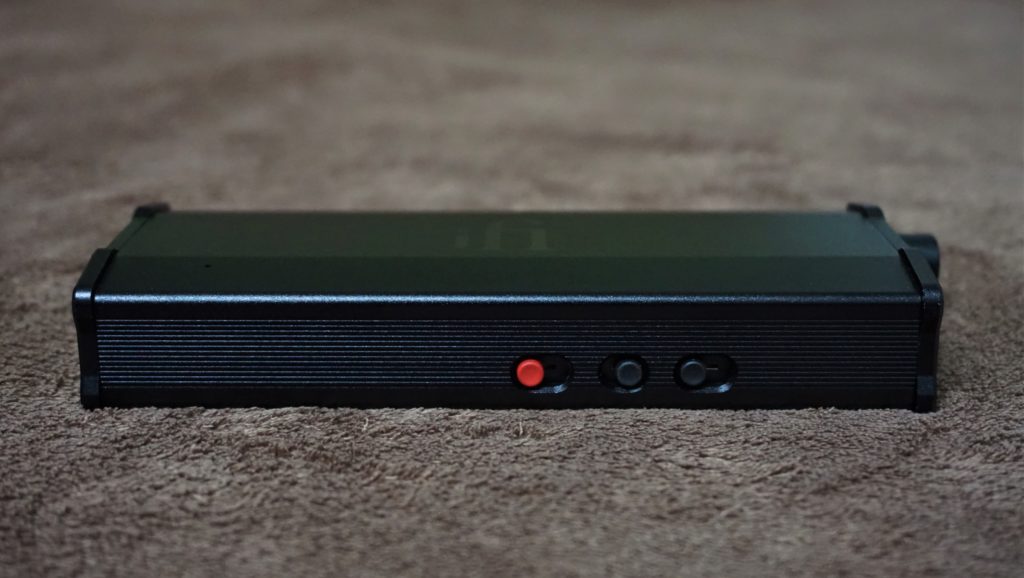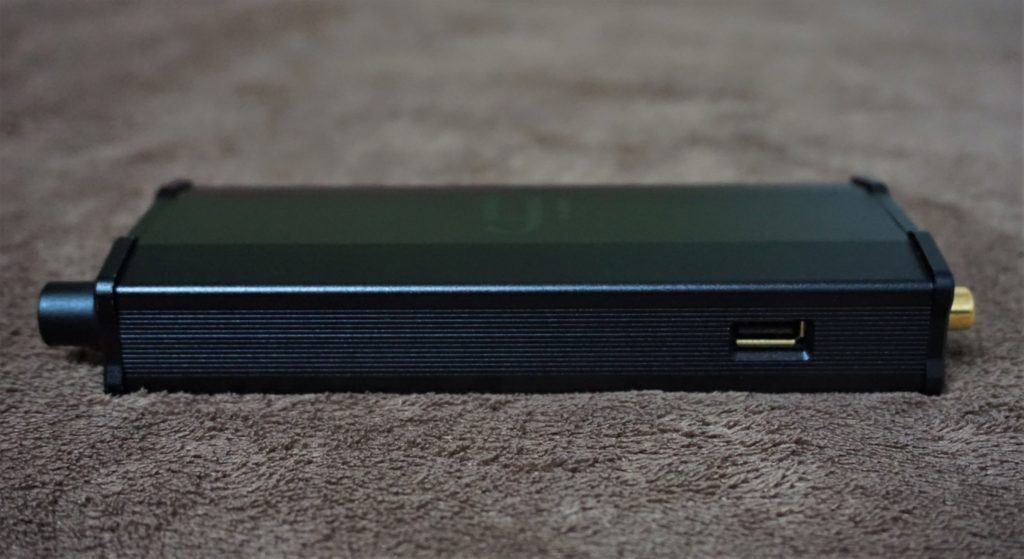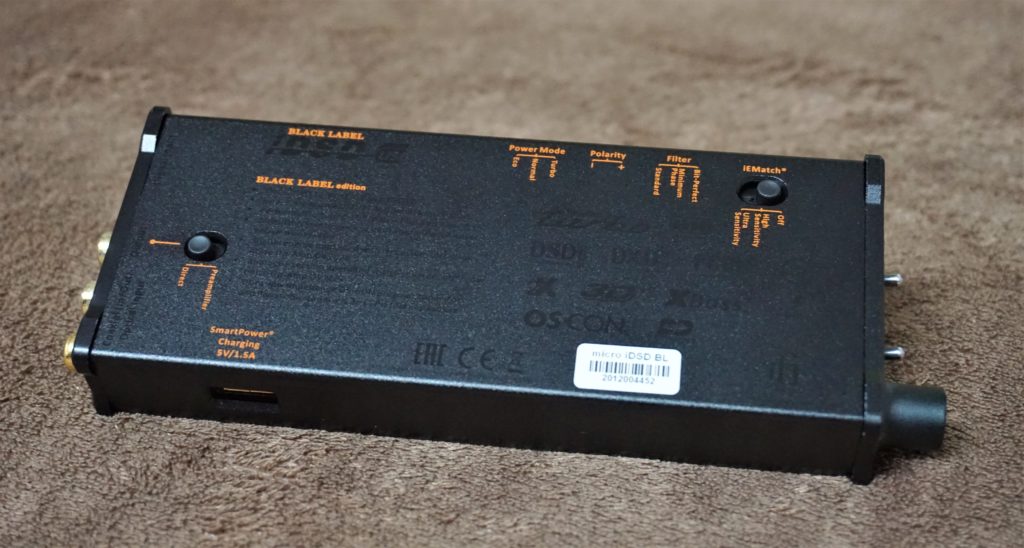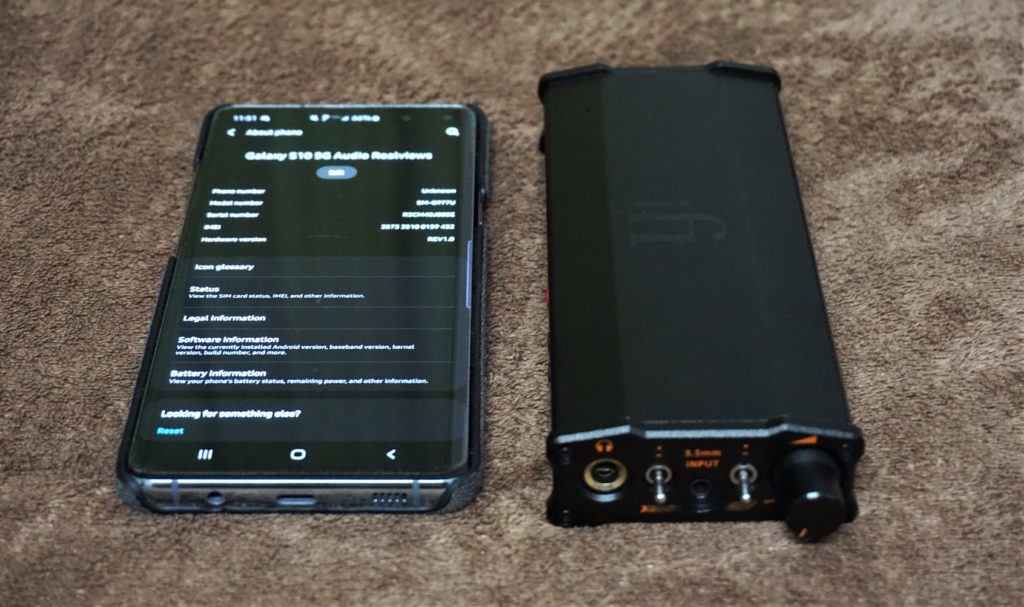iFi iDSD Micro Black Label
iFi iDSD Micro Black Label is a portable, powerful DAC with a lot of functionalities like MQA. It is priced at 599USD.
Sound quality for the price
Rating: 9 out of 10.
Build quality
Rating: 10 out of 10.
Value
Rating: 9 out of 10.
Packaging
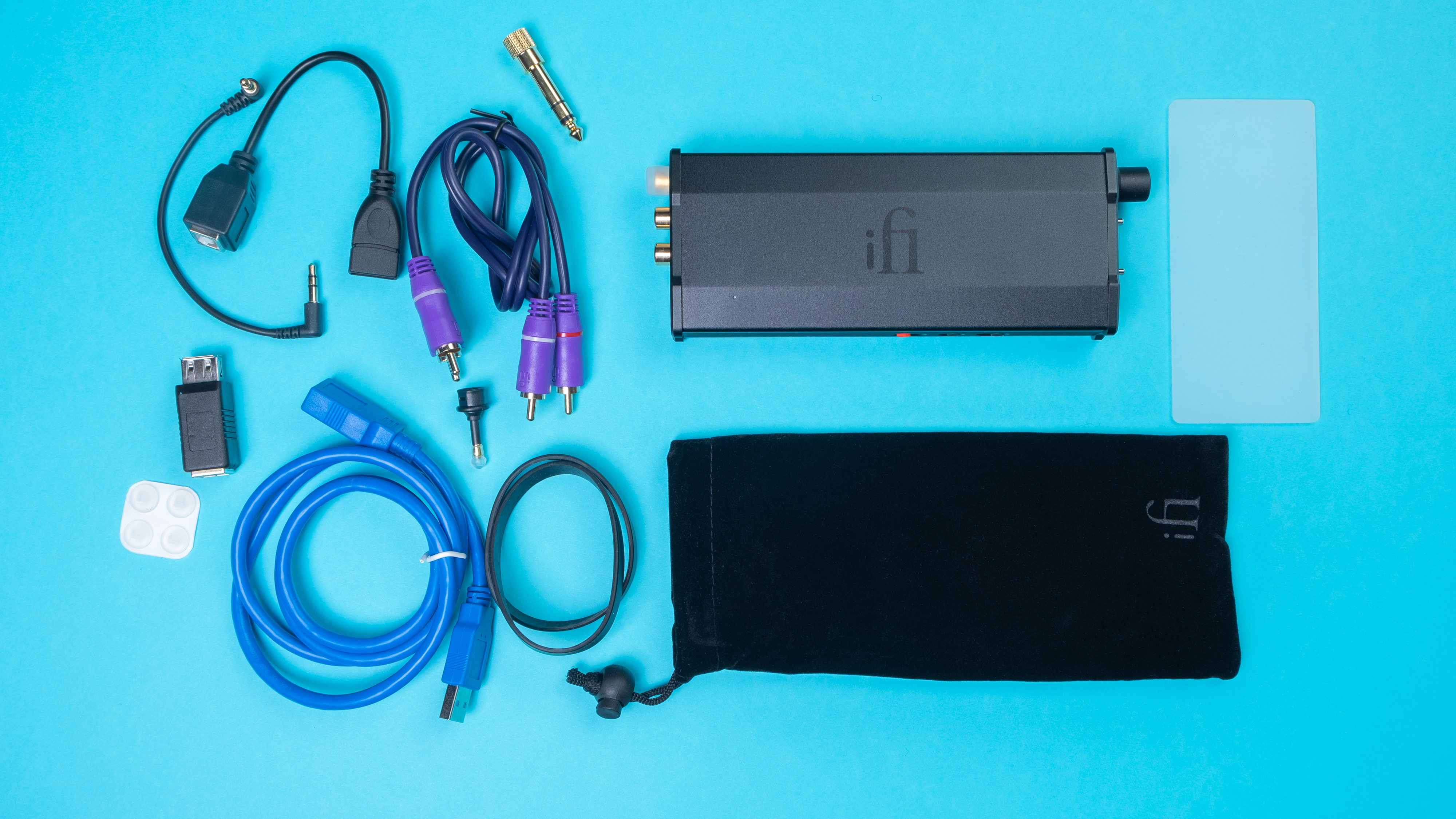
The box has the same design as all older iFi products do. Inside you can find a lot of things, so here’s a full list of them.
Four adapters – from USB type B to USB type A, USB type A OTG, 10cm interconnects terminated with 3,5mm jack, rubber feet, 3.5mm to 6.3mm jack adapter, normal optical connector to 3,5mm type, black soft pouch with iFi logo, RCA interconnects, two rubber straps and a rubber pad which you can use to stack the iDSD with your phone or DAP. This is a pretty nice list, Isn’t it?
Build quality

iFi iDSD Micro Black Label is basically a bigger brother of iDSD Nano series, so they share the same build quality. It is made of metal, with a lot of connectors, switches, subtitles and so on. I’ll explain the functionality of all of them in the next paragraph. Back to the topic, iDSD Micro is built perfectly, everything you can move is working with some resistance, but I wouldn’t define this as a problem. Dimples on both sides of iFi DAC improves the grip and look of this little person.
Functionality
That will be a long part of the text, so if you’re interested only in the sound you can skip this paragraph without any guilt.
The one really important thing for sound quality is the fact that iFi can decode MQA files, so you can listen to the master quality tracks on tidal.
On the front, you can find 6,35mm jack as an output, 3,5mm jack as an analogue input, two switches and the potentiometer which also turns on the whole device. Going back to switches, the one bestead closer to the 6,35mm jack is called XBass and it boosts bass in the best way I’ve heard in a DAC ever. It isn’t expanding reverberation, it really boosts the quantity of bass, but also improves the dynamic so the bass still remains fast as hell. The second switch is called 3D, and it is trying to enhance the soundstage and imaging, it is making such a deluded feeling with open-back headphones that produce wide scene, but it may help closed-back headphones of which the holography isn’t the strong point, anyway I wouldn’t use it for music, maybe for gaming and movies.
On the left side, iFi placed three sliders, the first one is a digital filter with the help of which you can choose between bit-perfect, minimum phase and standard. Differences between them are noticeable, but they aren’t game changers. Bit-perfect is the sharpest, but last two sound almost the same, the minimum phase is more delicate and the standard is the most natural. The second slider is called Polarity and the name explain everything, you can invert the phase using this one. The third and last on this side is Power Mode which is basically the gain. There’s Eco, normal and turbo. Always check if it is set properly because my very first try of this option scared me with the volume level.
On the rear, you can find RCA output, SPDIF In/Out connector and USB Type A connector that works as a digital input.
On the right side, iFi placed a USB Type A which allows the iDSD to charge other devices, like your phone. There’s 7,5W on the output (5V, 1,5A).
Finally, the last two sliders are located on the bottom of the device. First one supports the iEMatch function, so you can use your IEMs with such a powerful device without any issues. There are options of high sensitivity and ultra sensitivity, so even Campfire Audio Andromeda can be uses with it without any problems. The second slider allows you to choose between direct and preamplifier for RCA output.
Sound

A big, portable device with so many options. Can it be that good? Sure it can.
iFi iDSD Micro Black Label can easily fight with its stationary competitors like Topping DX7s, and in my opinion, it’s way better as a DAC than the Chord Mojo. iFi plays a very detailed, natural sound that can be a little brightened for some people. I would say that iFi lets the headphones play with their style, imposing almost nothing from itself. That’s a huge merit in my opinion, but it is making it harder to describe the DAC itself.
Taking a look at the power, it can easily drive most of the headphones available on the market.
As I mentioned before iFi isn’t providing much from itself to the sound but there are some things I can talk about.
The bass sounds really natural. It can strike hard, it can be lazy, just like the engineer/musician wanted to. It is very detailed, you can hear every single bounce of the stringing of the drums, every jolt of the strings from a bass guitar. Checked on the Fyne F500 that are very source sensible iFi slightly boosts the lows, they aren’t as hard as usual, they are very deep. Loved that thing, because it wasn’t warmed, just more like listening to the live sound.
The
midrange isn’t recessed even a little, vocals are always the first on the place. There’s no sign of smoothness, lower mids are very well texturized with a huge amount of confidence in the voices. It might sound strange for you, but I felt like wow, I would trust him,
even if he was singing about something I disagree with at all. On the other hand, female vocals are delicately sharpened and brightened, on bad mixed tracks it is even painful, so I have to reduce the volume even if I’m not sensible for things like that. Personally, I do not consider this as a con, since iDSD Micro BL focuses on being transparent and neutral, and it actually helps with evaluation of the song’s mastering.
The
treble is more similar to bass than higher midrange when it comes to overall sounding. It’s natural, not delicate, not sharp, it’s just playing nicely with a lot of details that are starting and ending with a kind manner. I love the timbre and accurateness of drum plates, they are very exact with a pleasant glimmer. Treble is like playing with long, soft hair. You can feel every single one of them, but it isn’t unpleasant for you in any way.
The
soundstage is – as it usually is on portable devices – narrower and less accurate compared to stationary devices like DX7s or RME ADI DAC-2, but way better than Chord Mojo or cheaper options like DACAMP L1 or Q5s. As for its width, the soundstage is deep and holography is great, even with complicated songs where there are many instruments. Separation stands on a high level, with a noticeable black background that is covered quickly with other sound sources.
Summary
 iFi iDSD Micro Black Label is micro only by the name, it sounds like a stationary DAC. It can charm you with its natural sound signature that isn’t inflicting the headphone that much as other sources sometimes do. Many functions, some like XBass and iEMatch works better, some like 3D, well, they are there. If you’re looking for a source that lets your headphones perform with their own style, you should check this one. But there’s one question at the end. Is it still a portable DAC with its dimensions and weight?
iFi iDSD Micro Black Label is micro only by the name, it sounds like a stationary DAC. It can charm you with its natural sound signature that isn’t inflicting the headphone that much as other sources sometimes do. Many functions, some like XBass and iEMatch works better, some like 3D, well, they are there. If you’re looking for a source that lets your headphones perform with their own style, you should check this one. But there’s one question at the end. Is it still a portable DAC with its dimensions and weight?
Gear used during this review for the sake of comparison and as an accompanying equipment:
- Headphones – Meze Rai Solo, Campfire Audio Andromeda, Audeze LCD-3, Brainwavz Alara, Fostex TH-610, Fyne F500
- Sources– DX3 Pro, Little Dot MK IV, Topping DX7s, Nuforce HA-200, DACAMP L1, Chord Mojo, FiiO Q5s, iFi iDSD Nano BL
Remember to visit us at ear-fidelity.com








